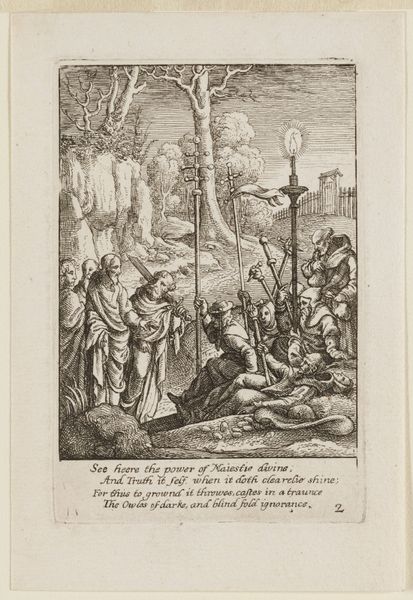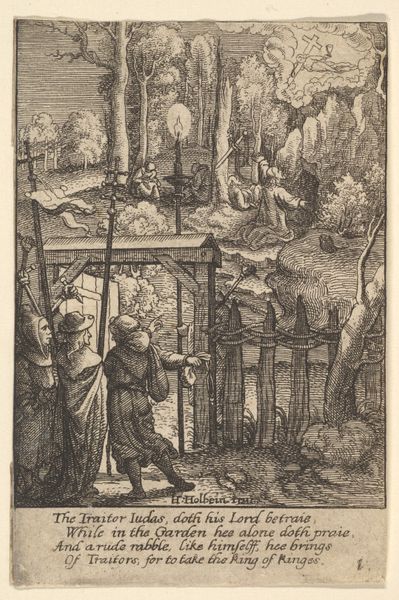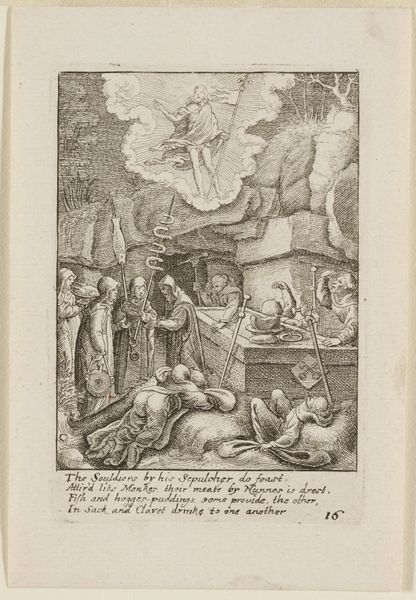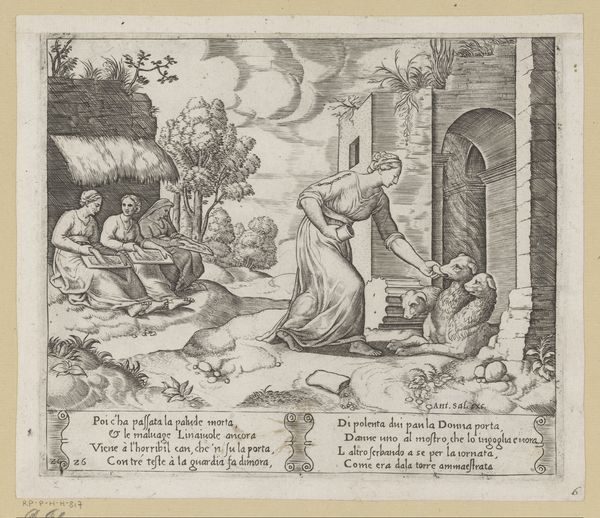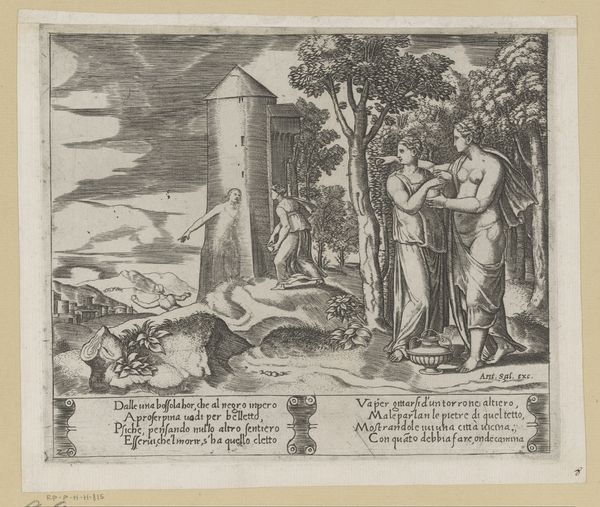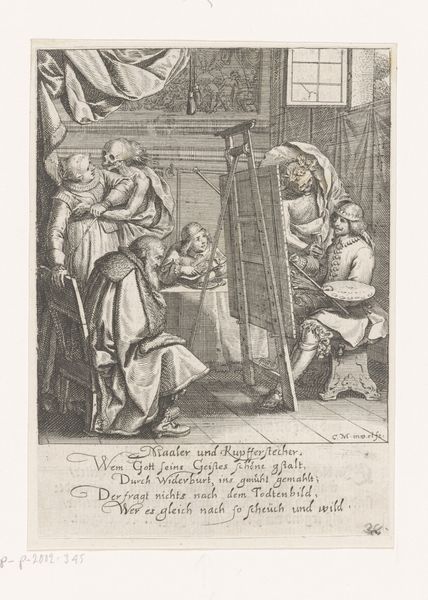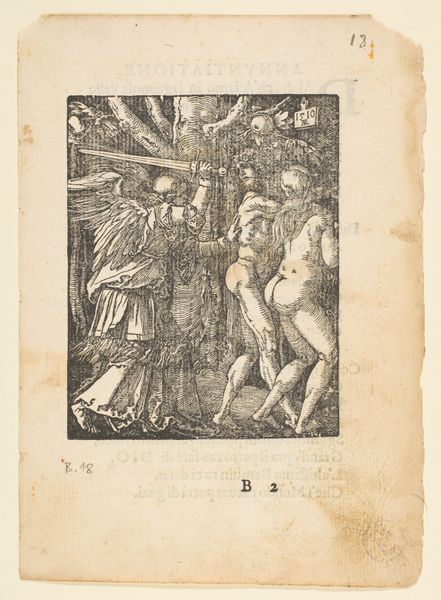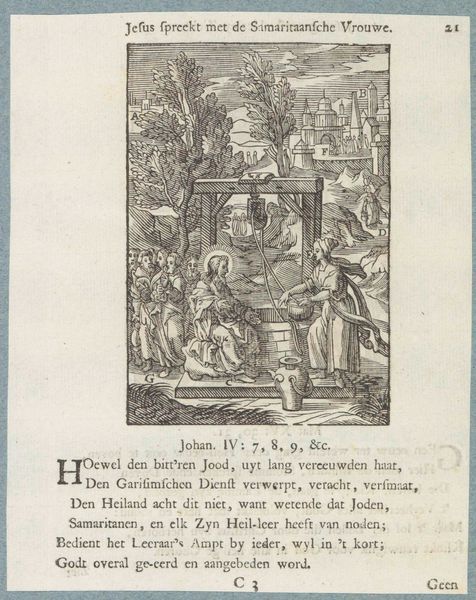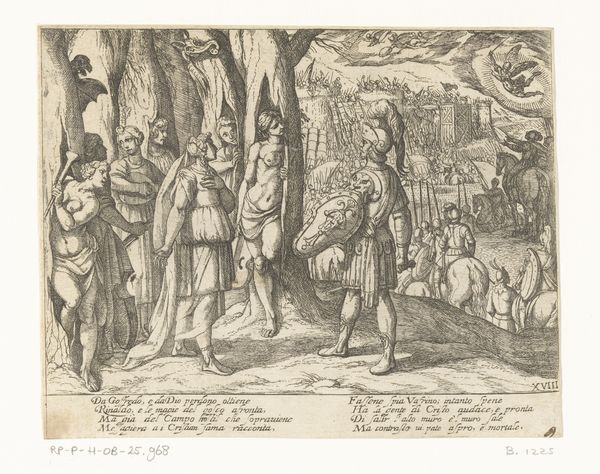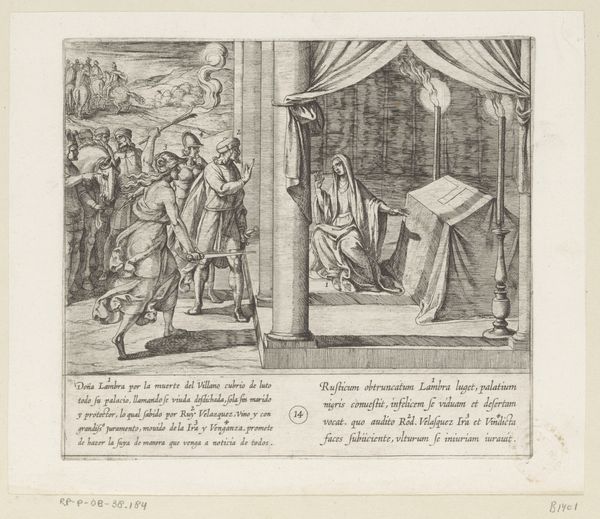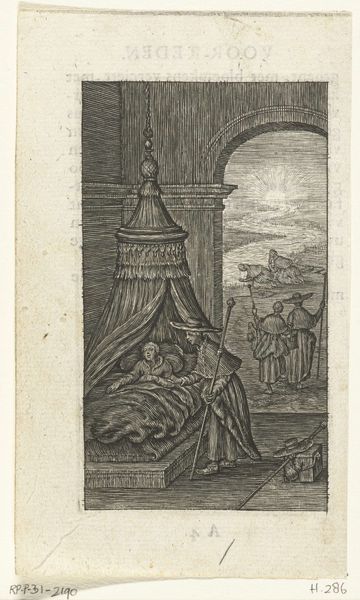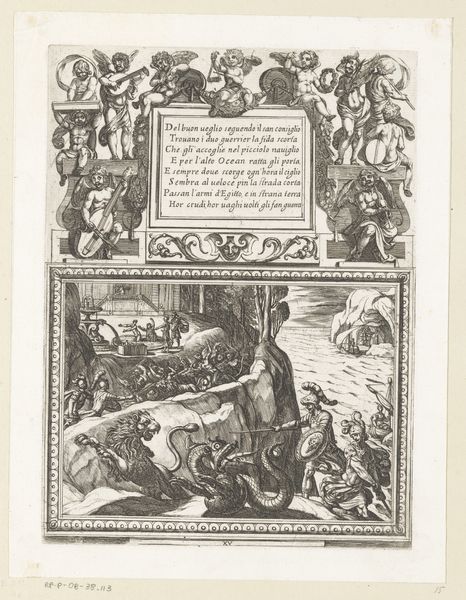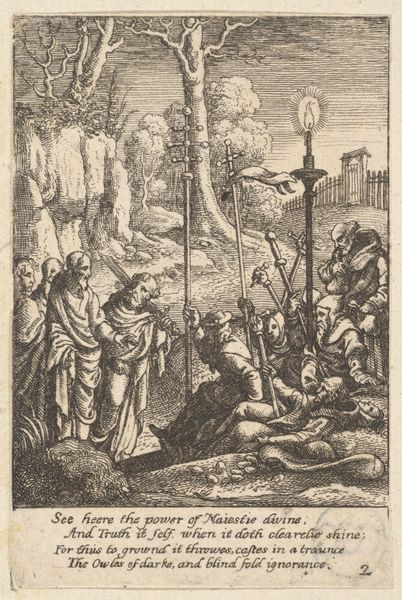
print, etching, engraving
#
baroque
# print
#
etching
#
landscape
#
history-painting
#
engraving
Dimensions: 3 9/16 × 2 7/16 in. (9.05 × 6.19 cm) (image)4 9/16 × 3 1/16 in. (11.59 × 7.78 cm) (sheet)
Copyright: Public Domain
Editor: This is "Christ on the Mount of Olives," an etching and engraving made between 1642 and 1654 by Wenceslaus Hollar. It's a small print, and the scene feels both intimate and immensely sad. What strikes me is the contrast between the peaceful, almost dreamlike vision of Christ praying, and the grim reality approaching him from the other side of the gate. How do you interpret this work? Curator: That's a keen observation. This contrast is key. Hollar, as an engraver, was a master of detail. Notice how he uses line to evoke not just visual information, but also emotional states. The luminous glow surrounding Christ speaks to the divine, a well-worn symbolic visual, and see how it contrasts against the dense, dark hatching used to depict the approaching figures of Judas and the soldiers. Think about the psychological weight these contrasting areas evoke – hope versus betrayal. Editor: So the light is acting almost as a symbol, separating the divine from the mortal realm. It's like two worlds colliding. Curator: Precisely! And consider the gate. What does it signify? In art, gates often mark a threshold, a passage between different states or realities. Here, it’s not just a physical barrier but a symbolic one, between Christ's spiritual communion and his impending suffering. The open gate welcomes you into both of these areas! The visual cue primes the emotional state, one of anxious, anticipatory dread. It's very Baroque, right? Editor: Definitely. I hadn't considered how much the composition guides my feelings. I thought the scene felt almost like a theatrical stage because of this technique. It’s a narrative condensed into a single image. Curator: Yes, this work really reveals the power of imagery to shape our understanding and emotional response to timeless narratives. By looking at these symbols we can really reveal both how imagery changes, but most importantly, how it remains the same throughout history!
Comments
No comments
Be the first to comment and join the conversation on the ultimate creative platform.
